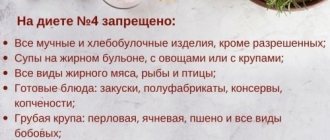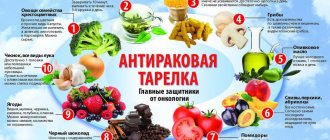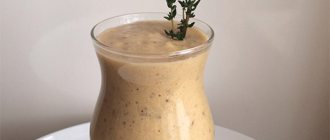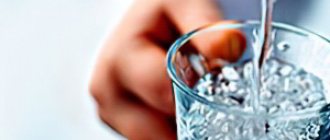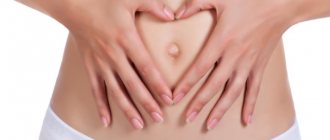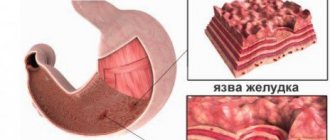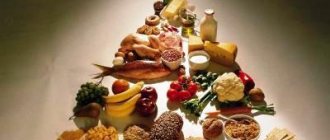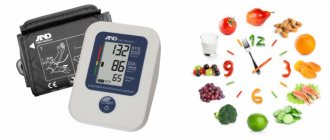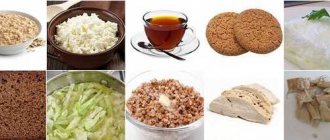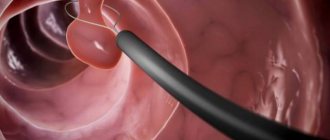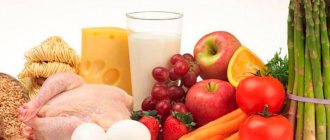Cystitis is an inflammatory process localized in the tissues of the bladder.
The disease can develop independently due to the invasion of harmful bacteria, hormonal imbalance, abuse of pharmaceutical drugs, or act as a complication of one of the chronic ailments.
Cure the disease in its advanced form is extremely problematic, so it is very important to adhere to an optimal diet that can improve well-being and reduce the intensity of inflammatory processes.
Importance of Diet
The main task of a special diet for cystitis is to rid the body of accumulated toxins and waste, as well as eliminate irritation of the mucous membranes of the urinary canals.
An important role is played by drinking a sufficient amount of water, which washes the walls of the bladder, removing various deposits beyond its boundaries.
With cystitis, a well-designed diet plays an extremely important role. Therefore, the diet must be followed not only during an exacerbation, but also in the case of a chronic disease.
Reducing intoxication
Intoxication is usually accompanied by muscle and headache pain, weakness, nausea and elevated body temperature. Such symptoms indicate a serious inflammatory process, so at the first sign of it, most nutritionists recommend adhering to the following rules:
- Animal proteins provoke increased stress on the body and can aggravate intoxication syndrome. Therefore, it is advisable for people suffering from cystitis to give preference to vegetarian food at least two days a week. Fresh vegetables and fruits are best, as well as dishes made from boiled vegetables and baked apples.
- It is necessary to drink enough liquid throughout the day. If the patient does not have decompensated diseases, kidney diseases or serious illnesses of the cardiovascular system, in addition to purified water, he should drink green tea without sugar, jelly, fruit drinks, fruit and vegetable juices.
Food should be divided into small portions. When cystitis worsens, it is recommended to reduce the amount of food to a minimum.
Antibacterial action
To stop the process of active reproduction of harmful bacteria, it is important to consume cranberry and lingonberry fruit drinks and other natural berry drinks, which are sources of hippuric and benzoic acids.
Prevention of stone formation
Before switching to an optimal diet, the patient must undergo biochemical tests. If the same salts predominate in the urine, such as oxalates, phosphates or urates, when drawing up a dietary menu, it is imperative to take into account the acidity (pH) of the urine.
Thanks to an alkaline environment, various phosphate salts are formed, in a neutral environment oxalate crystal formation occurs, and highly acidic urine leads to the formation of urate stones in the kidneys. After testing, patients are given the following recommendations:
- If large amounts of oxalate are detected, you need to exclude from your diet foods such as cocoa beans, strawberries, fresh figs, gooseberries, cranberries, beans (green), sorrel and other leafy greens.
- Alkaline urine and excess phosphates suggest heavy consumption of cereals, fish, eggs and seafood.
- In the case of oxidized urine with a predominance of urate salts, it is important to include various “alkalinizing” foods in the menu. These include: vegetables, fruits, sweet berries, as well as milk and fermented milk products.
Nutritionists recommend that patients, regardless of test results, consume dried fruits, millet, oatmeal, buckwheat and other foods rich in magnesium, which reduces the intensity of the crystallization process of uric salt.
How to enhance the effect of antibacterial drugs
The activity of many medications is affected by changes in urine acidity. Alkaline urine, with a pH above seven, can enhance the antibacterial effect of various pharmaceuticals.
Urine with a pH below five suggests the use of nitrofurans, tetracyclines, nitroxoline and other medications. The effect of antimicrobial therapy can be enhanced by adding or excluding certain foods to the diet.
How to prevent unnecessary irritation
In case of irritation of the mucous membranes in the event of exacerbation of cystitis, you need to remove from your menu products that are considered potential irritants.
These include the vast majority of spicy spices and seasonings, as well as mushrooms, meat or fish broths, leeks, garlic and other types of food rich in essential substances.
Authorized Products
Soups are prepared with vegetable broth. Cabbage soup made from sour cabbage, vegetable and cereal soups are allowed. They are seasoned with sour cream or butter, but any seasonings and herbs are excluded.
Ripe sweet fruits and berries, purees and jelly made from them, jellies and compotes without sugar are allowed. Honey is allowed, and for drinks - rosehip decoction, juices from sweet fruits, weak coffee and green tea, decoctions of cranberries, lingonberries, fruit drinks from these berries.
Table of permitted products
| Proteins, g | Fats, g | Carbohydrates, g | Calories, kcal | |
Vegetables and greens | ||||
| zucchini | 0,6 | 0,3 | 4,6 | 24 |
| carrot | 1,3 | 0,1 | 6,9 | 32 |
| beet | 1,5 | 0,1 | 8,8 | 40 |
| pumpkin | 1,3 | 0,3 | 7,7 | 28 |
Fruits | ||||
| watermelon | 0,6 | 0,1 | 5,8 | 25 |
| pears | 0,4 | 0,3 | 10,9 | 42 |
| melon | 0,6 | 0,3 | 7,4 | 33 |
| figs | 0,7 | 0,2 | 13,7 | 49 |
| apples | 0,4 | 0,4 | 9,8 | 47 |
Berries | ||||
| cowberry | 0,7 | 0,5 | 9,6 | 43 |
| cranberry | 0,5 | 0,0 | 6,8 | 26 |
Nuts and dried fruits | ||||
| raisin | 2,9 | 0,6 | 66,0 | 264 |
| dried apricots | 5,2 | 0,3 | 51,0 | 215 |
| dried apricots | 5,0 | 0,4 | 50,6 | 213 |
| dates | 2,5 | 0,5 | 69,2 | 274 |
Cereals and porridges | ||||
| buckwheat (kernel) | 12,6 | 3,3 | 62,1 | 313 |
| cereals | 11,9 | 7,2 | 69,3 | 366 |
| corn grits | 8,3 | 1,2 | 75,0 | 337 |
| pearl barley | 9,3 | 1,1 | 73,7 | 320 |
| millet cereal | 11,5 | 3,3 | 69,3 | 348 |
| white rice | 6,7 | 0,7 | 78,9 | 344 |
Confectionery | ||||
| jelly | 2,7 | 0,0 | 17,9 | 79 |
Raw materials and seasonings | ||||
| honey | 0,8 | 0,0 | 81,5 | 329 |
| sugar | 0,0 | 0,0 | 99,7 | 398 |
| sour cream sauce | 1,9 | 5,7 | 5,2 | 78 |
Dairy | ||||
| milk | 3,2 | 3,6 | 4,8 | 64 |
| kefir | 3,4 | 2,0 | 4,7 | 51 |
| cream | 2,8 | 20,0 | 3,7 | 205 |
| sour cream | 2,8 | 20,0 | 3,2 | 206 |
| curdled milk | 2,9 | 2,5 | 4,1 | 53 |
| acidophilus | 2,8 | 3,2 | 3,8 | 57 |
| yogurt | 4,3 | 2,0 | 6,2 | 60 |
Cheeses and cottage cheese | ||||
| cottage cheese | 17,2 | 5,0 | 1,8 | 121 |
Meat products | ||||
| boiled beef | 25,8 | 16,8 | 0,0 | 254 |
| boiled veal | 30,7 | 0,9 | 0,0 | 131 |
| rabbit | 21,0 | 8,0 | 0,0 | 156 |
Bird | ||||
| boiled chicken | 25,2 | 7,4 | 0,0 | 170 |
| turkey | 19,2 | 0,7 | 0,0 | 84 |
Eggs | ||||
| chicken eggs | 12,7 | 10,9 | 0,7 | 157 |
Oils and fats | ||||
| peasant unsalted butter | 1,0 | 72,5 | 1,4 | 662 |
| corn oil | 0,0 | 99,9 | 0,0 | 899 |
| olive oil | 0,0 | 99,8 | 0,0 | 898 |
| sunflower oil | 0,0 | 99,9 | 0,0 | 899 |
| ghee | 0,2 | 99,0 | 0,0 | 892 |
Non-alcoholic drinks | ||||
| mineral water | 0,0 | 0,0 | 0,0 | — |
| lingonberry juice | 0,1 | 0,0 | 10,7 | 41 |
| green tea | 0,0 | 0,0 | 0,0 | — |
Juices and compotes | ||||
| apricot juice | 0,9 | 0,1 | 9,0 | 38 |
| carrot juice | 1,1 | 0,1 | 6,4 | 28 |
| pumpkin juice | 0,0 | 0,0 | 9,0 | 38 |
| * data is per 100 g of product |
Nutrition during exacerbation of the disease
Acute cystitis is an inflammatory-purulent process localized in the tissues and mucous membranes of the bladder.
The disease is characterized by discomfort, pain and burning that accompany urination. Patients suffer from frequent urge to go to the toilet, but urine is released in small portions.
An exacerbation of cystitis usually lasts no more than a week, during which there is an elevated body temperature (37.1-37.8 degrees) and severe discomfort in the lower abdomen.
The main goals of the diet are to prevent bladder irritation and flush the urinary canals. After the patient’s condition has stabilized, he is recommended to adhere to the following diet:
- Eliminate processed meats and fish from your diet, replacing them with unsalted cheese, cottage cheese and fermented milk products.
- Consume 1-2 teaspoons of natural bee honey to reduce the activity of the inflammatory process in the acute phase.
- Saturate your own menu with foods that have a pronounced diuretic effect. These include representatives of melons such as melons and watermelons, as well as carrots, cucumbers and other fresh vegetables.
- Use herbal infusions. You can use ready-made mixtures designed to improve the functioning of the renal system, or you can prepare your own mixtures consisting of lingonberry leaves, corn silk, bearberry and other ingredients.
The patient must drink sufficient amounts of fluid (at least 1.6-2.6 liters during one day). To saturate the body with beneficial microelements, mineral water (calcium chloride), compotes from fresh and dry fruits, as well as all kinds of fruit drinks and juices are excellent (for example, pumpkin juice has a pronounced diuretic effect and has a moderate antibacterial effect).
Tomato juice is an exception, so people suffering from cystitis are advised to completely exclude it from their diet.
Diet during the acute phase of cystitis
Exacerbation of the disease in any form is accompanied by severe pain and frequent urge to empty the inflamed organ. Most often, it lasts no more than a week, so during this time the diet should be especially strict. It is important to ensure maximum rinsing of the urinary tract, which will help eliminate any pathogen.
Therefore, the power supply scheme should be built on the following rules:
- The liquid you drink should not be less than 2000 ml. It is advisable to increase its daily volume to 2500 ml. It should be not only ordinary, but also calcium chloride mineral water. In addition, fruit compotes without added sugar and vegetable juices are useful. Pumpkin juice has an excellent diuretic effect. Berry fruit drinks based on lingonberries and cranberries help relieve inflammation.
- Vegetables such as cucumbers, zucchini, spinach, pumpkin, carrots are useful. Fruits on the table should include pomegranate and pear. Depending on the season, you can eat watermelon. All this food of plant origin has a diuretic and, therefore, a healing effect.
- Once a day, you can drink herbal tea with a spoon of honey, which has an anti-inflammatory effect. Lingonberry leaves, corn silk, and green tea leaves can be used as a base for tea.
- The menu should not include dairy products. This is due to their high calcium and fat content. You are allowed to consume a small portion of cottage cheese, natural yogurt, low-fat and unsalted cheese or milk of your choice once a day.
- During the manifestation of the disease, you should avoid meat products and fish. With their subsequent gradual introduction. Preference should be given to lean meats and river fish.
- Constipation can be prevented by eating vegetables. Cabbage is useful, and any variety of it. You can introduce bran and porridges made from whole grain cereals into your diet.
- It is allowed to season salads with vegetable or olive oil. Once a day you can eat a handful of pine nuts.
Dietary nutrition for acute cystitis is aimed at washing the urinary tract to remove pathogenic microorganisms and breakdown products of epithelial cells.
With the first signs of cystitis, you should start drinking as much fluid as possible. Its daily intake should be at least two liters, unless there are contraindications such as cardiac edema and hypertension.
Need to drink:
- Cranberry and lingonberry fruit drinks;
- Mineral water without gas;
- Green tea, weak brew;
- Herbal teas;
- Jelly and fruit compotes, which are allowed for cystitis.
The daily diet should contain the following vegetables, which are excellent “diuretics”: zucchini, spinach, carrots, cucumbers in the form of salad and beetroot soup.
You can use watermelon as an excellent diuretic. If desired, you can add a teaspoon of honey to teas and cereals.
On days 1 and 2-1, you should forget about fish and meat; you can eat cottage cheese and cheese. In subsequent days, the list of allowed products becomes much larger, which includes dairy and meat products. Dietary nutrition should be followed for several weeks.
With chronic inflammation of the bladder, changes occur that can be stopped by following a diet.
During an exacerbation of the disease, you should eat the same foods as during the acute stage. The food must contain components that help increase immune strength.
A patient who has a chronic form of the disease needs to eat more fruits and vegetables and pay attention to porridge, especially rice. Rice has the ability to absorb harmful substances from the body. During the treatment of chronic cystitis, you need to forget about cigarettes, alcoholic drinks, spicy and fatty foods.
It is necessary to drink as much fruit drinks as possible from cranberries and lingonberries, as well as rosehip decoctions. Once every six months - take decoctions of medicinal herbs. To increase your calorie intake per day, you need to prepare pasta dishes, as well as boiled or stewed meat.
How to eat with a chronic illness
The disease in its chronic form is often accompanied by the appearance of blood in the urine, severe inflammation of the bladder and the appearance of small ulcers on the mucous membranes.
In case of chronic cystitis, the main goal of the diet is a diuretic and antibacterial effect, which is most easily achieved by adhering to the following recommendations:
- Regular consumption of fiber is considered a good preventive method against constipation, which provokes inflammatory processes localized in the tissues and walls of the bladder. The record holders for healthy fiber content are whole grain cereals, bran, fresh cabbage and carrots.
- Fruits and vegetables should make up 20 to 40% of your daily diet. Particular attention should be paid to pumpkin, pears, white grapes, cucumbers and similar products.
- A good addition to the daily menu will be the fruits of pine cones.
During an exacerbation of cystitis, it is recommended to completely avoid smoked and fried foods, as well as tomatoes, cauliflower, celery, garlic, various pickles, seasonings, spices, sour berries and fruits.
What can you eat if you have cystitis?
There are a large number of foods that can be eaten for bladder inflammation. The menu should include not only dishes rich in nutrients, but also fruit drinks and decoctions of medicinal herbs.
Usually, with cystitis, doctors advise patients to drink plenty of fluids, so you can add sea buckthorn and lingonberry juice to your daily menu.
Instead of your favorite sweets, you can eat honey. It is usually added to cereals, teas and decoctions. The beneficial substances contained in honey increase the body’s immune strength, as a result of which treatment proceeds much faster.
Meat can only be used boiled. When purchasing, you should pay attention to poultry, veal and beef with low fat content.
Recommendations for women
According to medical statistics, cystitis is observed in women several times more often than in the male half of the population. This fact is due to the wide urethra, which is more accessible to the invasion of harmful bacteria.
When creating an optimal dietary menu for cystitis in women, you should adhere to the general recommendations outlined above. However, the following tips are intended specifically for female patients:
- products made from premium flour are best replaced with bran and whole grain bread;
- infusions prepared from medicinal herbs with a diuretic effect are recommended to be consumed every day;
- It is highly advisable to include vegetable soup or vegetarian borscht, cooked without spicy spices and herbs, in your daily diet.
During the period of remission, you need to drink at least 2 liters of purified water. During exacerbations, it is worth additionally drinking calcium chloride non-carbonated mineral water.
Nutrition for men
Cystitis in men is most often triggered by pathogenic bacteria and infectious agents, such as chlamydia, various fungi, staphylococcus or E. coli. Invasion of the bladder occurs due to blood flow.
In men, the main goal of a diet for cystitis should be not only to reduce the intensity of inflammatory processes, but also to stabilize the general condition of the patient.
A number of fermented milk products, cranberry juice and cereals should be introduced into the diet. You should completely avoid sour fruits and berries, fast food and alcoholic drinks.
Is it possible to eat meat and fish during inflammation?
Those who believe that you should not eat meat and fish if you have cystitis are deeply mistaken. Meat contains cholesterol and beneficial amino acids, which are so necessary for the restoration of the epithelial layer of the bladder. Only fatty meats, lard, smoked sausages, and kebabs are prohibited for consumption. This is due to the fact that they are prepared in a way that is unacceptable for treating the urinary system.
Boiling is used as a method of cooking meat.
Diet for children
When creating a menu for a child suffering from cystitis, you should adhere to the above recommendations. In addition, it is important to introduce decoctions and infusions of the following medicinal plants and herbs into your daily diet:
- water trefoil;
- valerian;
- dried string leaves;
- chamomile leaves and inflorescences;
- hop cones;
- wild rosemary.
Also have good therapeutic potential: linden inflorescences, pumpkin and flax seeds, compotes and fruit juices prepared without added sugar.
Sample menu
It is important to adhere to the recommended diet even outside the period of exacerbation of the disease. Above was a fairly impressive list of permitted foods from which you can prepare a wide variety of dishes.
For the first meal, porridge, pureed vegetables and unsalted varieties of cheese are best. Instead of strong black tea, it is preferable to drink green or fruit juice or compote.
Vegetable soups, beetroot soups, meatless borscht, as well as stewed and baked vegetable dishes are great for lunch. For dinner, it is recommended to eat vinaigrettes, fresh vegetable salads with olive or flaxseed oil, or cottage cheese casseroles.
